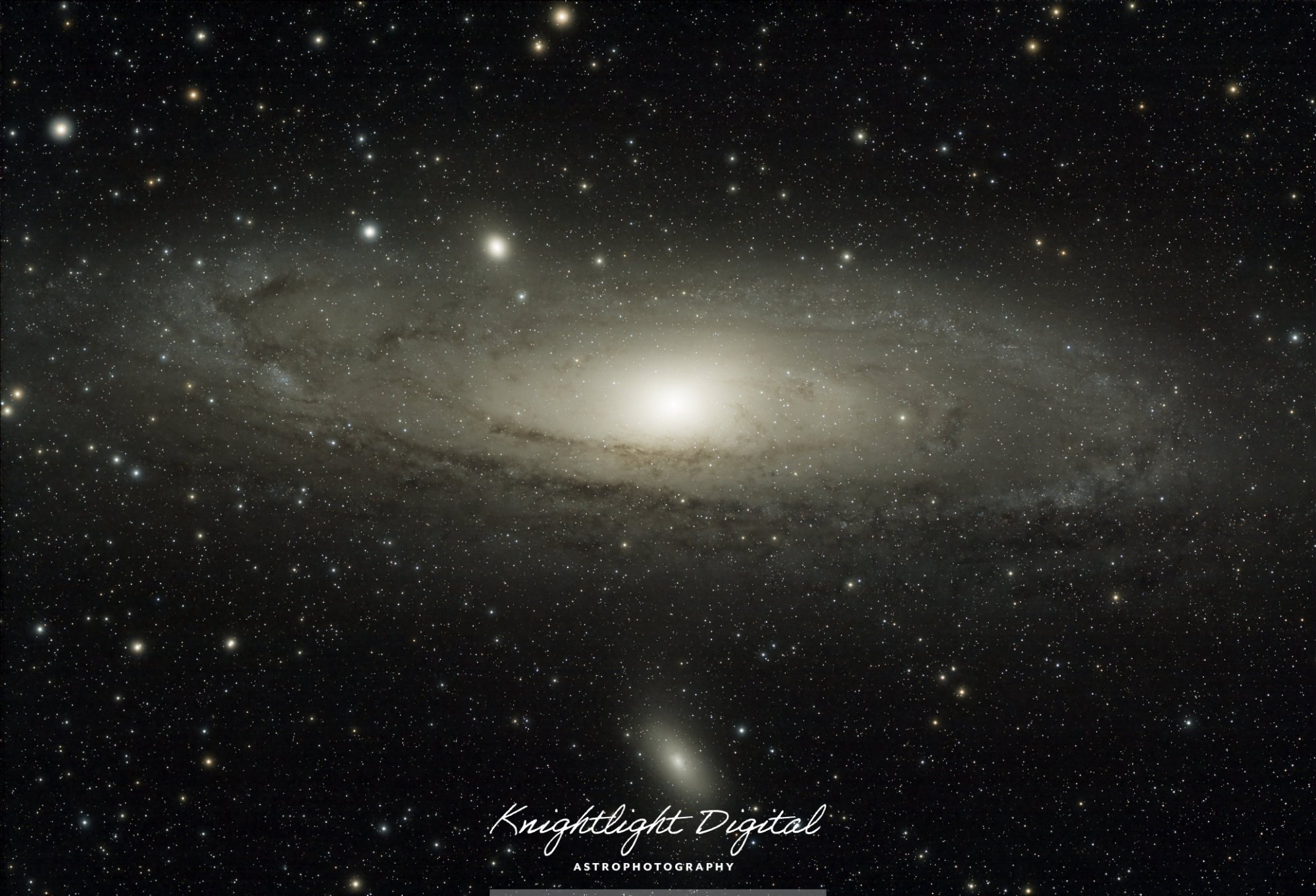
The Northern Kentucky Stargazer
Astrophotography & Live Stacking
-
Telescope: Askar 71f Refractor
The Askar 71f refracting telescope gives me the ability to capture large areas of the sky in a very flat field. The added focal reducer makes the area even larger. It’s small at only 71mm, but its f5 focal ratio means it gathers light fast.
-
Mount: Skywatcher EQM-35 Pro
The Skywatcher EQM-35 Pro mount is a computerized equatorial tracking mount. It’s light enough to be portable but sturdy enough for long-exposure astrophotography.
-
Camera: ASI294MC Pro
The ASI294MC Pro by ZWO is a four-thirds sized sensor that captures a large area. It’s cooled to reduce noise and very sensitive. It’s a dedicated astrophotography camera, not a traditional DSLR.
-
Guide Camera: ASI120MM
For long exposure photography you need a guide camera to keep your field of view centered. The ASI120MM is coupled to an Apertura 50mm guide scope to provide the mount with accurate guiding the entire night.
-
Filters: Askar & Optolong
Narrowband filters are absolutely necessary if you image from a light-polluted area. While not as bad as a large city, my area still has a lot of light pollution. The Askar C1 & C2 filters allow me to capture light in the bandwidths that most nebulae emit: Ha, SII, and OIII. For imaging galaxies and star clusters I use an Optolong UV/IR filter. All filters are mounted in a ZWO electronic filter wheel so I can select the ones I want through the software.
-
Controller: ASIAir Plus
The ASIAir Plus is a small Raspberry Pi computer that is mounted to the telescope. It allows me to control the mount, filter wheel, electronic focuser, and cameras via an app that runs on my phone or tablet. The ASIAir handles everything necessary for taking astrophotos, including giving me the ability to setup a “plan” for unattended imaging. It also allows me to Live Stack.